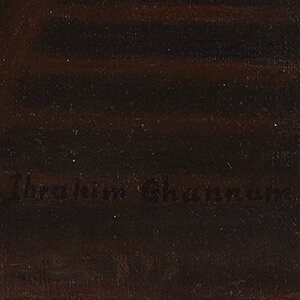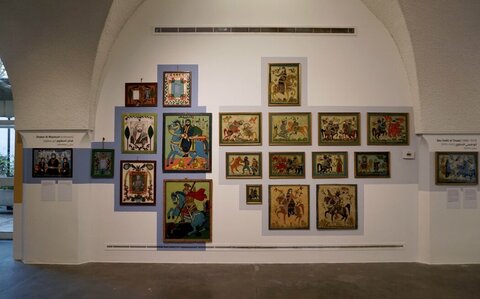


Last updated on Mon 8 June, 2020


The Naïve Arab Artist: Naïfs, Outsiders, L’art Autre, and L’art Brut in the Middle East
AUB Art Galleries
This exhibition is dedicated to a particular category of artists. They may not even be regarded as “real” artists—but when they are, art critics make sure to add one of the multiple qualifiers collected over the years to describe this specific group. The most commonly used descriptors for identifying these artists include: naïve, naïfs, faux-naïfs, faux-faux-naïfs, semi-naïfs, outsiders, faux-outsiders, and art brut. And here is a longer list collected from various sources:
… vernacular art, autodidact art, primitive art, maverick art, tribal art, isolate art, folk art, visionary art, inspired art, schizophrenic art, self-taught art, patient art, untutored art, idiosyncratic art, original art, psychotic art, introvert art, outlaw aesthetics, estranged art, anti-cultural art, unfettered art, the art of the artless, unmediated art, breakaway art, art without precedent, anti-cultural art, non-cultural art, desublimated art, asylum art, art of the insane, raw art, grassroots art, primitive art, autistic art, intuitive art, non-traditional folk art, mediumistic art, dilettante art, amateur art, marginal art, would-be faux-naïfs art, really-not-so-naïf art, eccentric art, rough art, l’autre art…
The most commonly accepted terms in art historiography have been art brut and outsider art. The former was introduced by the artist Jean Dubuffet in 1948 and has been primarily used within the French academic context, while the latter was more recently designated as the English equivalent of art brut (by Roger Cardinal in his celebrated 1972 book Outsider Art). For convenience, our exhibition often relies on these two terms, using them interchangeably to signify the concepts or to refer to modes of production deployed by the artists grouped under this umbrella.
This multiplicity of labels points to the profound ambiguity and contradictoriness that surrounds this form of art-making. The terms in themselves (brut, naïve, outsider) reveal first of all a lack: a lack of experience, wisdom, culture, or judgment of taste (and sometimes of reason itself); a lack of education, sophistication, or insight into art historical conventions; and more recently a lack of familiarity with art critical and theoretical trends dominating the contemporary artworld. But among admirers of this artistic genre and its practitioners, these terms have also acquired a range of positive connotations: honesty, purity, sincerity, genuine emotion, pure creativity, authenticity, truthfulness, spontaneity, innocence, and many more. Today, when the insider artist is first of all a successful self-promoter and businessperson, it is the outsider—and we are referring here to the genuine ones, not to the many trained contemporary artists who have adopted the outsider persona or their pictorial language—who keeps alive the romantic image of the artist as the social misfit, the dissident, the shaman who is less invested in cultivating the aura of private authorship and more under a mystical compulsion to communicate with other worlds.
This exhibition shows about fifteen naïve and outsider artists from the Middle East, including one unknown, and many anonymous craftsmen working on vernacular Qur’ans produced in Central Asian and included in this exhibition. The exhibited artists and craftsmen not only practice distinct forms of art-making, but also come from diverse backgrounds or relate to different identities. Some of them did not even call themselves artists, even taking pride in the fact that they were not “artists” or that they came to art from more ordinary and sometimes quite old-fashioned trades.
The primary aim of the exhibition is not to administer art historical or art critical medication to this category of artists. Rather, The Naïve Arab Artist seeks to bring to the attention of the public a conflicted and conflated category of art or image-makers—some names are well known while others are not—without any attempt to incorporate them into the art historical or critical discourse. The exhibition does not seek to clarify or sort out the confusion of labels listed above. (During my research phase in Beirut, on many occasions I had to find ways to avoid discussions regarding how to distinguish between “outsiders” and “naïfs,” between “faux-naïfs,” “semi-naïfs,” and “psychotic art.”) Instead, we have endeavored to present an impartial survey of naïve and outsider artistic and artisanal practices from the Middle East, showing the works, or the relations among them, in their full ambiguity and complexity. The exhibit approaches this category of image or art-making in terms of imaginary worlds set outside of mainstream art and its systems of exchange. The Naïve Arab Artist could be regarded, in other words, as an attempt to find ways to glimpse into black holes—that is, to reach by free association into the “unconsciousness” of current official art.
Octavian Esanu AUB Art Galleries
Join us in our endless discovery of modern and contemporary Arab art